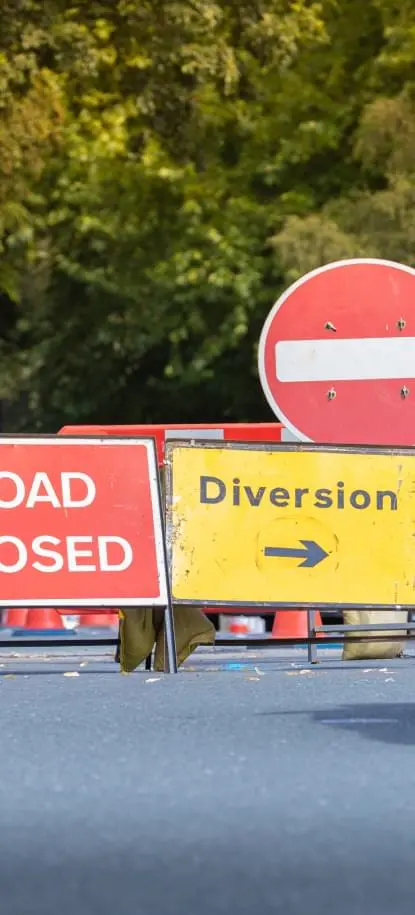




Quick Links:





Temporary or full road closures require an approved KAUST Work Permit and Road Closure License before work starts with early coordination with HSE, Security and Emergency Services and other stakeholders as may be required concerning the anticipated roadway operations.
Communicate the road closure plan to affected parties. Any changes in the plan should be prepared by the responsible party and approved by HSE.
Assign individuals who are trained and knowledgeable (for example, trained and/or certified) to prepare the road closure plan as per HSE requirements.
Consider other nearby projects and facilities which may be affected by the road closure.
Provide a time estimate for works taking place and consider holiday periods in the schedule of works.
Inform residents of the location, dates of closure and alternative traveling routes using LENS announcements.
Record near miss incidents which could highlight ways to further minimize risk for the work taking place.
Provide road signage meeting the specification criteria for normal KAUST use.
Ensure workers on site have the correct Personal Protective Equipment (PPE).
Have a documented road closure plan approved by HSE.
Ensure early coordination with Security and HSE.
Ensure that road user movement is inhibited as little as practical.
Plan to avoid frequent and abrupt changes in geometrics such as lane narrowing or main roadway transitions that require rapid maneuvers.
Schedule work in a manner that minimizes the need for lane closures or alternate routes to reopen roads for normal traffic flow as soon as possible.
Reduce the volume of traffic using the roadway to match the restricted capacity conditions. Road users should be encouraged to use alternative routes with clear and readable signage.
Make provision for safe access for bicyclists and pedestrians, including those with disabilities.
Consider scheduled work during off-peak hours where reasonably practicable.
Night work should be considered if the work can be accomplished with a series of short-term operations.
Signage, road markings and other signals are required to guide road users including bicyclists, pedestrians and alternative modes of transport users in a clear manner while approaching and traversing affected areas.
Provide adequate and clear warning, delineation, and channelization to warn road users in advance.
No road markings, reflectors, and signs in KAUST may be destroyed, tampered with, moved, or disposed of in a way that would make them less visible or interfere with the agree meaning thereof.
The movement of heavy vehicles must be planned to avoid peak pedestrian and vehicle traffic.
